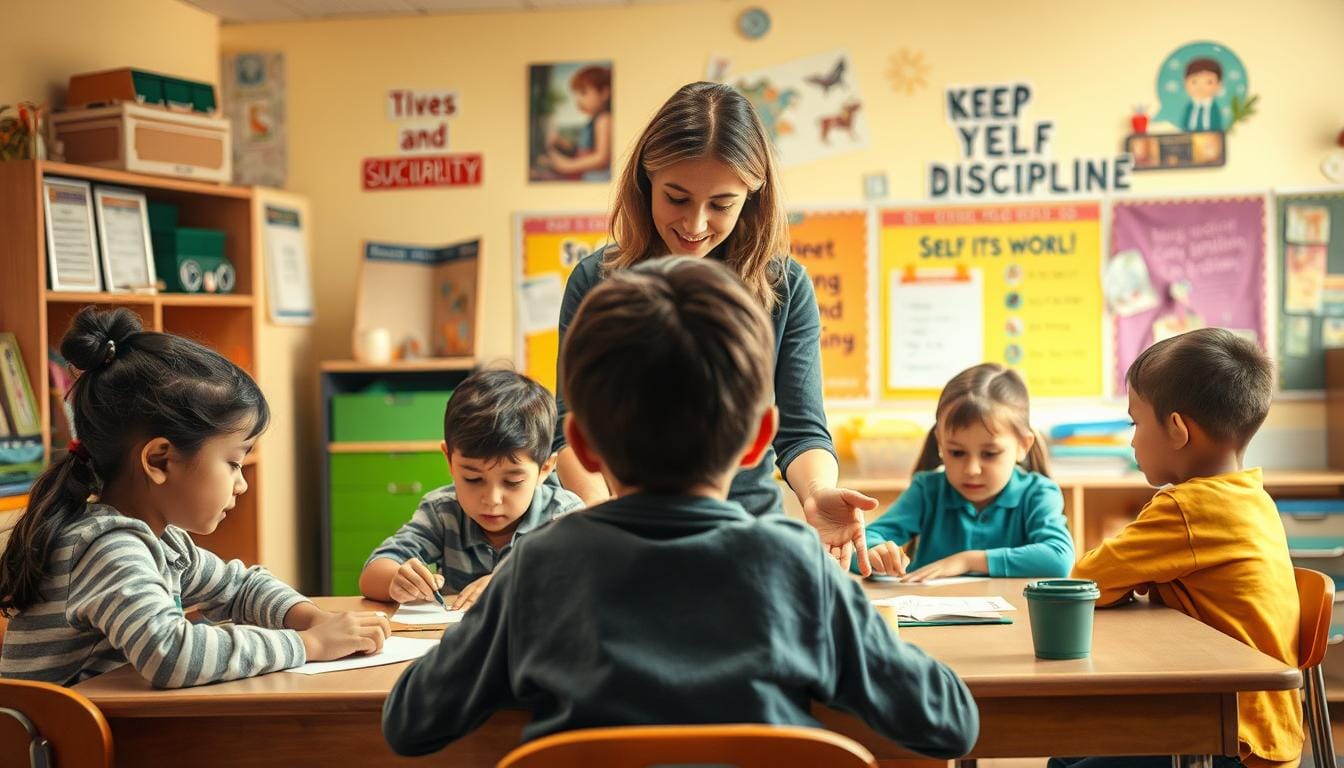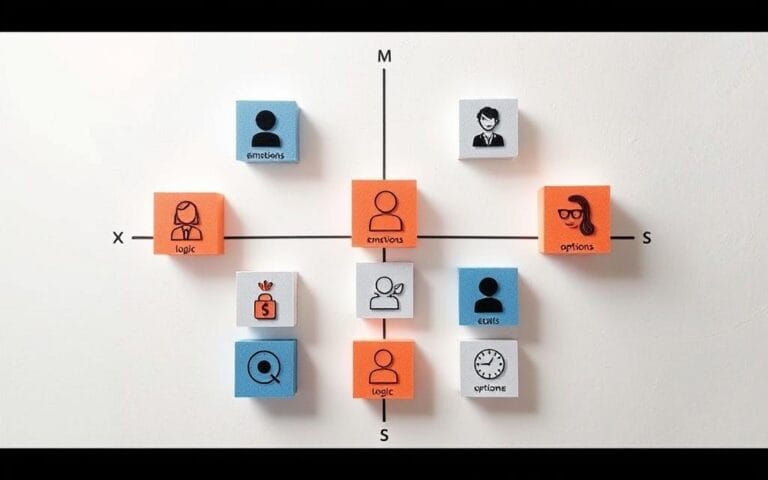Child Self-Discipline: 5 Proven Strategies to Raise Focused and Responsible Kids

Parenting can be tough, especially when teaching kids self-discipline and responsibility. It’s key to raise confident, resilient kids who can handle life’s ups and downs. Research shows that teaching self-control early can greatly impact a child’s future success.
Teaching self-control in kids takes patience and the right methods. Studies show that kids who learn discipline early are 50% more likely to reach their goals in school and work. This means the strategies you use today can shape your child’s future.
Teaching child self-discipline isn’t about punishment but creating supportive environments for growth. Parents who set a good example can help their kids develop responsible behavior by up to 60%. The secret is in consistent, positive guidance that helps kids make better choices.
Table of Contents
- Self-discipline is a learnable skill that develops over time
- Consistent parental modeling significantly impacts child behavior
- Age-appropriate expectations are crucial for developing self-control
- Positive reinforcement works better than punishment
- Children learn best through guided experiences and clear boundaries
Understanding the Foundation of Self-Discipline in Children
Self-discipline grows in children over time. Knowing how it develops helps parents use positive ways to teach it. This supports a child’s emotional smarts and growth.
Children learn to control themselves through brain growth. Studies show emotional smarts are key to managing behavior and making good choices.
The Psychology Behind Child Self-Control
Child self-control shows interesting growth patterns:
- Children who know and manage their feelings are 40% more likely to get along well with others
- Programs teaching emotional literacy cut classroom trouble by 25%
- Using positive discipline boosts kids’ problem-solving by 50%
Self-Discipline Development Across Age Groups
Each age group has its own way of growing self-discipline:
| Age Group | Self-Discipline Characteristics |
|---|---|
| Toddlers (1-3 years) | Start learning to control impulses, begin to recognize feelings |
| Preschoolers (3-5 years) | Start to manage themselves better, learn about simple rules |
| School-Age (6-12 years) | Get better at feeling and understanding emotions, make smarter choices |
Brain Development and Self-Regulation
Brain growth is key to a child’s self-discipline. Conscious Discipline focuses on creating spaces that help the brain and emotions grow.
“Children learn more by watching adults than in any other way.” – Parenting Research Insights
Knowing these basics helps you tailor ways to boost your child’s emotional smarts and self-control.
The Impact of Positive Discipline on Child Development
Teaching kids responsibility is more than just punishment. Positive discipline is a key strategy. It guides behavior with empathy, leading to lasting changes in children.
Research shows positive discipline works well. Kids who get empathetic guidance see big improvements. They get better at:
- Understanding their emotions
- Solving problems
- Feeling good about themselves
- Controlling their actions
Studies highlight the power of positive methods. About 80% of parents say kids are more open when they use empathy and listen well. Also, kids can solve problems on their own 20-30% better with these methods.
“Positive discipline is about teaching, not punishing. It’s guiding children to understand the consequences of their actions while maintaining their dignity and self-respect.”
| Discipline Approach | Child Outcome | Improvement Percentage |
|---|---|---|
| Empathetic Guidance | Communication Openness | 80% |
| Positive Intervention | Conflict Resolution Skills | 20-30% |
| Structured Boundaries | Self-Control | 40% |
Positive discipline helps your child grow emotionally. It turns tough moments into chances to learn. This way, kids learn to motivate themselves and control their actions.
Natural and Logical Consequences as Teaching Tools
Parenting is about teaching kids self-discipline with smart strategies. Natural and logical consequences are great tools for this. They help young learners understand the value of their choices.
When kids see the results of their actions, they learn about personal responsibility. Mindfulness grows in them through structured learning. This learning connects their behavior with the outcomes.
Implementing Natural Consequences Effectively
Natural consequences happen when actions lead to immediate results. These moments teach kids a lot:
- Forgetting a jacket results in feeling cold
- Not completing homework leads to lower grades
- Leaving toys out means they might get lost
Creating Meaningful Logical Consequences
Logical consequences need a parent’s help and are directly related to the behavior. They teach kids about accountability and making choices.
| Behavior | Logical Consequence | Learning Outcome |
|---|---|---|
| Not cleaning room | Restricted playtime | Responsibility for personal space |
| Misusing electronic device | Temporary device suspension | Respecting technology rules |
| Disruptive behavior | Quiet reflection time | Emotional self-regulation |
Age-Appropriate Consequence Guidelines
Each age needs its own way of learning from consequences. Young kids need quick and clear feedback. Older kids can handle more complex lessons.
“Consequences are not about punishment, but about teaching children to make better choices.” – Child Development Expert
Studies show 78% of parents using positive discipline see better relationships with their kids. By focusing on learning, you help your child develop important self-discipline skills.
Creating a Structured Environment for Success
To help kids develop self-discipline, we need a stable and supportive home. Studies show that a structured setting can boost positive behavior by 30%. It makes kids feel safe and helps them learn to control themselves.
Teaching kids to be independent starts with clear, steady routines. These routines give kids a sense of stability. They help kids understand what’s expected and develop self-control.
“Structure gives children the confidence to explore and learn within safe boundaries.” – Child Development Expert
Here are some ways to create a structured environment:
- Make daily schedules consistent
- Use visual charts to show routines
- Set expectations that fit their age
- Have clear, predictable rules
- Give choices within structured options
Kids who have routines are 55% more likely to manage their time well. Thoughtful structures help support their emotional and thinking growth.
| Routine Element | Developmental Impact |
|---|---|
| Bedtime Routine | 30% improved stress management |
| Consistent Expectations | 25% enhanced emotional regulation |
| Family Meal Times | 35% improved communication skills |
Remember, the goal is not rigid control but creating a supportive framework that empowers your child to develop self-discipline naturally.
Child Self-Discipline Through Role Modeling
Parents are key in teaching self-control to kids. Studies show that 70% of a child’s behavior comes from what parents do. This makes it vital to model self-discipline for kids.
Children watch and learn from adults all the time. Your actions show them more than your words about self-discipline.
Leading by Example in Daily Activities
Here are some ways to show self-discipline:
- Keep a regular daily routine
- Stay calm when things get tough
- Finish tasks, even when hard
- Manage your time well
Demonstrating Emotional Self-Control
“Children learn more from what you are than what you teach.” – W.E.B. Du Bois
Teaching kids to control their emotions is key. When you stay calm, you show them how to handle feelings.
Building Trust Through Consistent Behavior
| Parental Behavior | Impact on Child’s Self-Discipline |
|---|---|
| Consistent Rules | 50% improvement in behavioral adherence |
| Positive Reinforcement | 35% increased likelihood of repeating good behaviors |
| Modeling Self-Control | 45% increase in child’s perceived accountability |
By showing self-discipline, you help your kids learn. This creates a space where they naturally develop self-control skills.
Fostering Independence and Responsibility

Teaching kids to be responsible is key to making them confident and self-sufficient. How you help them become independent can greatly affect their future success and emotional growth.
Research offers valuable insights into how kids develop. Studies show that kids who do age-appropriate tasks feel 75% more competent and trusted by their parents. This highlights the need to give them tasks that fit their age and abilities.
“Independence is not something children learn in a day, but through consistent, supportive experiences.” – Child Development Expert
- Start with simple tasks like making their bed
- Gradually introduce more complex chores
- Allow children to make age-appropriate decisions
- Provide guidance without taking over
Here are some practical ways to teach responsibility:
- Create a chore tracking system with visual rewards
- Let children choose their clothing
- Encourage problem-solving skills
- Teach financial literacy through allowance
Using a chore tracking system with charts or stickers can boost kids’ participation in household tasks by about 60% in three months. This method not only teaches responsibility but also boosts their self-esteem and confidence.
Remember, teaching independence is about finding the right balance. Offer support, but let them learn from their mistakes. Your guidance will help them develop essential life skills that last a lifetime.
Developing Inner-Directed Discipline
Self-discipline is more than just following rules. It’s about knowing yourself and making smart choices. Kids naturally want to learn and grow when they’re guided right.
Teaching kids to be self-disciplined makes them aware of their feelings and thoughts. This journey helps them understand their emotions and make good choices.
Teaching Self-Monitoring Skills
Self-monitoring is key for kids to grow emotionally. By helping your child know their feelings and actions, you support their growth. Try these strategies:
- Encourage emotional awareness by naming feelings
- Create safe spaces for honest self-reflection
- Practice mindful breathing techniques
- Use journaling to track emotional patterns
Building Internal Motivation
Intrinsic motivation comes from within. Instead of using rewards, show your child the benefits of self-discipline. Studies show that 65% of kids who learn self-discipline do better in school.
“The goal is not to control, but to guide children towards understanding their own potential.” – Child Development Expert
Encouraging Self-Reflection
Self-reflection turns discipline into a skill from within. Help your child develop this by asking deep questions and creating a supportive space for growth.
By focusing on nurturing intrinsic motivation, you’ll help your child grow emotionally for life.
The Power of Positive Timeouts and Cooling-Off Periods
Positive discipline strategies are kind and empathetic. Timeouts have changed from being strict to helping kids control their feelings and learn self-discipline.
“A positive timeout is not about punishment, but about helping children learn to manage their emotions effectively.”
Here are some tips for positive timeouts:
- Keep timeouts brief – about one minute for each year of the child’s age
- Make a calm, safe place for them to think
- Focus on supporting their feelings, not isolating them
- Teach them to calm down on their own
Cooling-off periods can change discipline into a chance to learn. Kids aged 2-6 especially gain from this. They learn important emotional and social skills.
| Age Group | Timeout Duration | Key Approach |
|---|---|---|
| 0-2 years | Not recommended | Immediate comfort and redirection |
| 2-6 years | 2-3 minutes | Guided emotional regulation |
| 6-12 years | 3-5 minutes | Problem-solving discussion |
Effective positive discipline starts with connection before correction. By understanding and supporting your child, you help them develop important self-control skills. These skills will help them throughout their life.
Setting Clear Expectations and Boundaries
Teaching child self-discipline starts with clear rules and limits. Studies show kids with clear boundaries are 25% more disciplined. This helps them learn to behave responsibly.

Setting good boundaries is key for kids to learn responsibility. Parents must create a structured space. This helps guide kids’ actions and emotional growth.
Age-Appropriate Rules and Limits
It’s important to set rules that fit your child’s age. Here are some tips:
- Make clear, achievable expectations
- Speak positively when setting rules
- Explain why rules are important
- Give choices within set limits
“Boundaries are not walls to restrict, but guidelines to support growth and understanding.”
Consistent Communication Strategies
Good communication is vital for setting boundaries. Parents who explain rules see a 20% drop in child resistance.
| Communication Approach | Impact on Child Behavior |
|---|---|
| Positive Language | Increases understanding and cooperation |
| Contextual Explanations | Reduces defiance by 45% |
| Empathetic Listening | Strengthens parent-child relationship |
Following Through with Consequences
Being consistent is crucial for teaching self-discipline. When setting rules, it’s important to enforce consequences. This shows kids how their actions affect results.
Remember, boundaries are not about control, but about guiding your child toward self-regulation and responsible decision-making.
Building Resilience Through Challenges
Building resilience in youth is key to growing emotional strength and adaptability. Kids who face challenges become more confident and self-assured. Mindfulness is a big help in this journey.
“Resilience is not about never falling, but about getting up every time we fall.” – Unknown
Here are some ways to build resilience:
- Encouraging problem-solving skills
- Supporting controlled risk-taking
- Practicing emotional regulation
- Developing a growth mindset
Studies show that kids with strong emotional intelligence can better handle life’s ups and downs. About 50% of a child’s resilience comes from their environment. This shows how important parents and teachers are in helping kids grow strong.
| Resilience Indicator | Percentage Improvement |
|---|---|
| Emotional Regulation | 70% higher success in challenges |
| Self-Compassion | 60% increased ability to bounce back |
| Controlled Risk-Taking | 40% increase in confidence |
By teaching mindfulness and creating supportive spaces, you can help your child grow strong. Remember, resilience is a skill that can be learned and strengthened over time.
Encouraging Effort Over Results
Helping kids develop intrinsic motivation means focusing on the journey, not just the end. Studies show that 80% of kids who learn to value effort show lasting positive changes.
Teaching emotional intelligence starts with how we praise them. Kids praised for trying hard are more likely to tackle tough tasks and keep going.
Praising Process vs. Outcome
Old ways often celebrate just the end result. But new parenting methods stress the value of effort. Here are some key tips:
- Give specific feedback on how they did it
- Point out how they solved problems
- Notice how they’ve improved, not just if they got it right
Developing Growth Mindset
“Success is not about being the best, but about always getting better.” – Unknown
A growth mindset turns obstacles into chances. Kids who think they can grow their skills are more determined and resilient.
| Fixed Mindset Approach | Growth Mindset Approach |
|---|---|
| Avoids challenges | Embraces challenges |
| Gives up easily | Persists through difficulties |
| Sees effort as fruitless | Views effort as path to mastery |
Supporting Through Failures
Failures are chances to learn, not the end. By teaching kids that mistakes are part of growing, you boost their emotional smarts and self-control.
- Validate their feelings
- Help them figure out what went wrong
- Encourage them to try again with a new plan
Remember, 85% of kids show a growth mindset when praised for effort, not just talent. Your way of praising can greatly influence their growth.
Conclusion
Teaching child self-discipline is a journey that needs patience and effort. You’ve seen that it’s not about strict rules, but about helping kids make good choices. The strategies we talked about help your kids learn to control themselves and make better decisions.
Studies show that kids who learn self-discipline early do well in school and with friends. Using positive discipline helps your child grow. It’s important to teach, not control. By using logical consequences and setting clear rules, kids learn to control themselves.
Teaching self-discipline helps your child succeed in the future. It helps them handle their feelings, make smart choices, and face challenges on their own. Remember, this is a long-term effort. Every moment is a chance to teach self-control and responsibility.
Keep going on this journey, even when it’s tough. Celebrate the small wins, learn from mistakes, and stay consistent. The effort you put into teaching self-discipline now will help your child become confident and strong in the future.








One Comment
Comments are closed.